Want to add a touch of timeless beauty to your landscape? Many DIYers and contractors find installing irregular natural random loose stone daunting due to the perceived complexity. Getting it wrong leads to unstable pathways, uneven surfaces, and a look that’s anything but natural.
But fear not! This guide breaks down the process into easy-to-follow steps, ensuring your project looks professionally done. From selecting the right stone to mastering the mortar, you’ll learn how to create stunning patios, walkways, and more. Choosing high-quality irregular natural random loose stone from a trusted source like Top Source Stone ensures dimensional precision, material integrity, and aesthetic excellence.
-
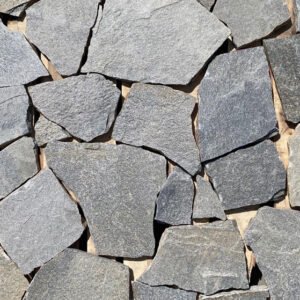 Naturalna, szara, kwarcytowa okładzina ścienna z dzieloną powierzchnią, luźna, kamienna okładzina ścienna
Naturalna, szara, kwarcytowa okładzina ścienna z dzieloną powierzchnią, luźna, kamienna okładzina ścienna -
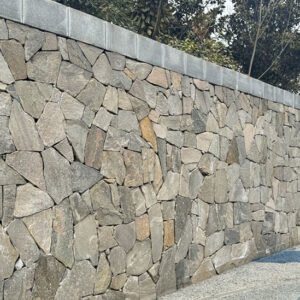 Naturalny kwarcyt, losowe, nieregularne kamienne płytki panelowe do okładzin ściennych
Naturalny kwarcyt, losowe, nieregularne kamienne płytki panelowe do okładzin ściennych -
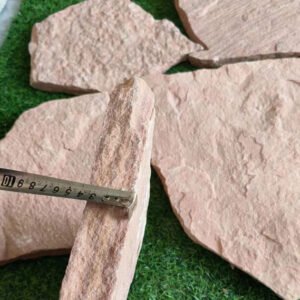 Hurtownia różowego piaskowca losowo luźna okładzina kamienna
Hurtownia różowego piaskowca losowo luźna okładzina kamienna -
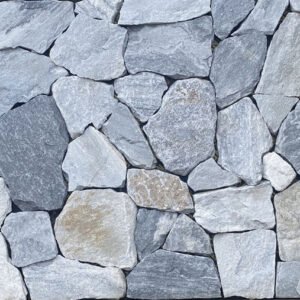 Hurtownia niebieskiego kwarcytu losowo luźna kamienna płytka do okładzin ściennych
Hurtownia niebieskiego kwarcytu losowo luźna kamienna płytka do okładzin ściennych -
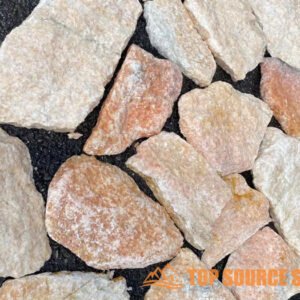 Naturalny, luźny kamień do okładzin ściennych wewnętrznych i zewnętrznych
Naturalny, luźny kamień do okładzin ściennych wewnętrznych i zewnętrznych -
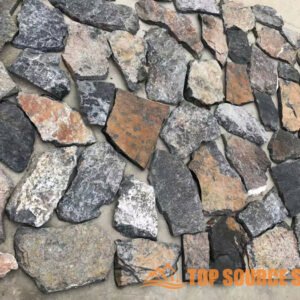 Losowy zewnętrzny kamień naturalny Luźny kamienny fornir Dekoracja okładzin ściennych
Losowy zewnętrzny kamień naturalny Luźny kamienny fornir Dekoracja okładzin ściennych -
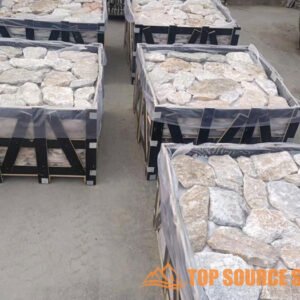 Naturalny, nieregularny, losowy, luźny fornir kamienny
Naturalny, nieregularny, losowy, luźny fornir kamienny -
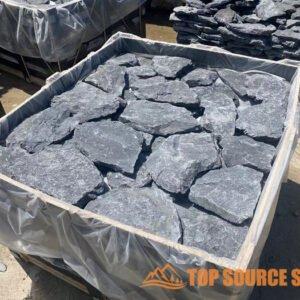 Dostawa fabryczna w Chinach Zewnętrzne naturalne, losowe, luźne kamienne płytki elewacyjne
Dostawa fabryczna w Chinach Zewnętrzne naturalne, losowe, luźne kamienne płytki elewacyjne -
 Cena fabryczna Naturalna zewnętrzna, losowa, luźna okładzina ścienna z kamienia
Cena fabryczna Naturalna zewnętrzna, losowa, luźna okładzina ścienna z kamienia -
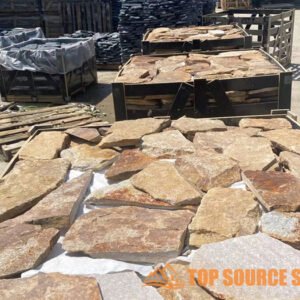 Zewnętrzna żółta, szorstka, losowa, luźna okładzina ścienna z kamienia
Zewnętrzna żółta, szorstka, losowa, luźna okładzina ścienna z kamienia -
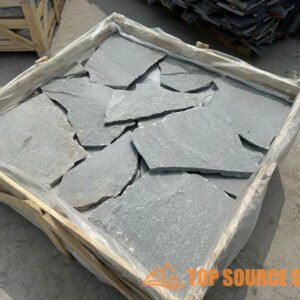 Naturalny, losowy, luźny panel ścienny z kamienia do wnętrz i na zewnątrz
Naturalny, losowy, luźny panel ścienny z kamienia do wnętrz i na zewnątrz -
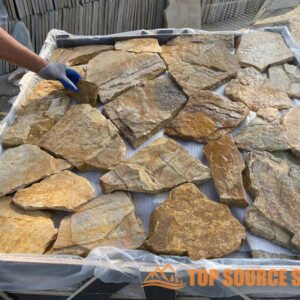 Naturalna luźna okładzina ścienna z kamienia do dekoracji ścian
Naturalna luźna okładzina ścienna z kamienia do dekoracji ścian
Planning Your Random Loose Stone Project: Selection and Design
Planning an irregular natural random loose stone project involves several key steps to ensure a beautiful and lasting result. From assessing your landscape to estimating materials, careful planning is essential for a successful outcome. This chapter will guide you through the initial stages, focusing on stone selection, design considerations, and project scope definition. Proper planning helps avoid costly mistakes and ensures your vision becomes a reality.
“Using Irregular Natural Random Loose Stone in your landscape design can add a unique, natural touch that enhances the overall aesthetic and complements the surrounding environment.”
Assessing Your Landscape: Evaluating Soil, Drainage, and Space
Before choosing your stones, evaluate your landscape. Check the soil type; is it clay, sand, or loam? Good drainage is crucial to prevent water from damaging your stone installation. Observe how water flows during rain to identify potential problem areas. Also, measure the available space to determine the area you’ll be covering with stone. Knowing these details helps you select appropriate stones and prepare the ground effectively. This step is “super important”, don’t miss it!
Consider the existing features of your landscape. Do you have trees, shrubs, or other plants that will influence your design? Note the sun exposure in different areas, as this can affect the color and texture of the stones over time. Understanding your landscape’s unique characteristics allows you to create a design that harmonizes with its natural surroundings.
Choosing the Right Stone: Color, Texture, and Material Options
Selecting the right stone is a critical step in planning your project. Consider the color, texture, and material options available. Colors range from earthy browns and grays to vibrant reds and yellows. Texture can vary from smooth and polished to rough and rugged. Material options include granite, limestone, sandstone, and slate. Each type offers a unique aesthetic and level of durability. Top Source Stone offers a wide range of options to suit any project.
Think about the overall style you want to achieve. A rustic design might benefit from rough-textured, earthy-toned stones, while a modern design could incorporate smooth, gray stones. Visit Top Source Stone to explore various samples and find the perfect match for your vision. Their customization services ensure you get exactly what you need.
Design Layouts: Patterns and Placement for Visual Appeal
Układ kamieni może znacząco wpłynąć na wizualny atrakcyjność Twojego projektu. Rozważ różne wzorce i opcje umieszczania. Losowy wzór może stworzyć naturalny, organiczny wygląd, a bardziej ustrukturyzowany wzór może dodać odrobinę formalności. Eksperymentuj z różnymi aranżacjami, aby zobaczyć, co najlepiej działa na twoją przestrzeń. Zrób zdjęcia swoich ulubionych układów, aby pomóc Ci wyobrazić sobie końcowy wynik. Właściwe planowanie jest kluczowe.
Pomyśl o odstępach między kamieniami. Ciasny układ może stworzyć solidną powierzchnię, a szersze odstępy mogą pozwolić na pokrywę naziemną lub dekoracyjnym żwirze między kamieniami. Rozważ funkcję projektowanego obszaru. Ścieżka może wymagać bardziej stabilnej, równomiernej powierzchni, podczas gdy obszar dekoracyjny może pozwolić na większą swobodę twórczą. Użyj nieregularnego naturalnego losowego luźnego kamienia, aby nadać Twojemu projektowi wyjątkowy akcent.
Materiały szacujące: Obliczanie potrzeb kamiennych i zapraw
Dokładne oszacowanie potrzeb materialnych ma kluczowe znaczenie, aby uniknąć wyczerpania kamienia lub nadmiernego wydatków. Zmierz obszar, który planujesz przykryć i obliczyć materiał kwadratowy. Użyj tego pomiaru, aby określić, ile kamienia potrzebujesz. Dodaj bufor 10-15%, aby uwzględnić cięcia i odpady. Oszacuj również ilość zaprawy lub żwiru wymaganego do ustawienia kamieni. Najlepszy kamień źródłowy może udzielić porad ekspertów na temat oszacowania materiałów.
Rozważ grubość kamieni podczas szacowania materiałów. Grubsze kamienie będą wymagały więcej zaprawy i mogą wpływać na całkowitą wysokość wykończonej powierzchni. Skonsultuj się z profesjonalistą w górnym kamieniu źródłowym, aby upewnić się, że masz dokładne pomiary i szacunki materialne. Ich wiedza specjalistyczna może zaoszczędzić czas i pieniądze na dłuższą metę. Zapewnia to, że nie zostaniesz złapany w połowie projektu.

Niezbędne narzędzia i materiały do instalacji kamienia
Preparing for a stone installation project requires gathering the right tools and materials. Having everything on hand ensures a smooth and efficient process. This chapter outlines the necessary tools, mortar, base materials, and jointing compounds needed for a successful installation. Being well-prepared is half the battle!
“Using the correct tools and high-quality materials is crucial for a durable and aesthetically pleasing Irregular Natural Random Loose Stone installation.”
Gathering Tools: Rubber Mallet, Trowel, Level, and Safety Gear
A rubber mallet is essential for gently tapping stones into place without damaging them. A trowel is used for applying mortar evenly. A level ensures that your stones are properly aligned. Safety gear, including gloves and eye protection, is crucial to protect yourself during the installation process. Having these tools readily available will make the job much easier. Don’t forget to protect your knees!
Additional helpful tools include a chisel for shaping stones, a measuring tape for accurate placement, and a wheelbarrow for transporting materials. Consider renting specialized tools if you’re tackling a large project. Always prioritize safety by wearing appropriate personal protective equipment (PPE). These simple steps make a big difference.
Mortar Selection: Choosing the Right Mix for Stone Adhesion
Choosing the right mortar is crucial for ensuring proper stone adhesion. Consider the type of stone you’re using and the environmental conditions. A polymer-modified mortar is often recommended for its superior bonding strength and flexibility. Pre-mixed mortars are convenient, but mixing your own allows for greater control over the consistency. Top Source Stone recommends quality mortar for long-lasting results.
Factors to consider when selecting mortar include its compressive strength, water resistance, and setting time. Ensure the mortar is compatible with the specific type of stone you’re using. Read the manufacturer’s instructions carefully and follow them precisely. Using the wrong mortar can lead to cracking and instability. This is no joke!
Base Materials: Gravel, Crushed Stone, and Sand
The base materials provide a stable foundation for your stone installation. Gravel is typically used as a sub-base for drainage. Crushed stone provides a level surface for the stones to rest on. Sand is used to fill in small gaps and create a smooth surface. Top Source Stone offers a variety of aggregates to suit your project needs. A solid base is key to a long-lasting installation.
Proper base preparation is essential to prevent settling and shifting of the stones. Compact the base materials thoroughly using a plate compactor or hand tamper. Ensure the base is level and well-drained. A poorly prepared base can lead to significant problems down the road. Take your time and do it right.
Jointing Compounds: Options for Filling Gaps and Enhancing Stability
Jointing compounds fill the gaps between the stones, enhancing stability and preventing weed growth. Options include polymeric sand, mortar, and epoxy-based jointing compounds. Polymeric sand is easy to install and provides flexibility. Mortar offers a more traditional look and greater durability. Epoxy-based compounds provide superior strength and water resistance. Choose the best option for your specific needs.
Wybierając związek złącza, rozważ jego kolor, teksturę i łatwość zastosowania. Upewnij się, że związek jest kompatybilny z typem używanego kamienia. Uważnie postępuj zgodnie z instrukcjami producenta, aby zapewnić odpowiednią instalację. Związki połączenia nie tylko zwiększają stabilność, ale także poprawia ogólną estetykę twojego projektu. Dobre połączenie robi dużą różnicę!
Zalecane narzędzia i materiały do instalacji kamienia
| Narzędzie/materiał | Opis | Zamiar | Średni koszt | Najwyższy źródło kamiennego ekwiwalent |
|---|---|---|---|---|
| Gumowy młotek | Młot z gumową głową. | Stukanie kamieni na miejsce. | 15 USD – 30 USD | Nie dotyczy |
| Kielnia | Płaskie, spiczaste narzędzie do rozprzestrzeniania zapraw. | Równomierne stosowanie moździerza. | 10 USD – 20 USD | Nie dotyczy |
| Poziom | Narzędzie do zapewnienia powierzchni są poziome lub pionowe. | Zapewnienie wyrównania kamieni. | 20 USD – 50 USD | Nie dotyczy |
| Moździerz zmodyfikowany przez polimer | Mieszanka moździerza z polimerami do zwiększonego wiązania. | Przylegające razem kamienie. | 15 USD – 25 USD za torbę | Top Source Stone Stone Morta |
| Zmiażdżony kamień | Stopniowany kruszywa do przygotowania podstawowego. | Tworzenie poziomu i stabilnej bazy. | 30 USD – 50 USD za metr sześcienny | Najlepsze źródło kamiennej podstawy kruszywa |
| Piasek polimerowy | Piasek zmieszany z polimerami do napełniania stawów. | Wypełnianie luk i zapobieganie wzrostowi chwastów. | 20 USD – 30 USD za torbę | Top źródłowe kamienne połączenie piasku |
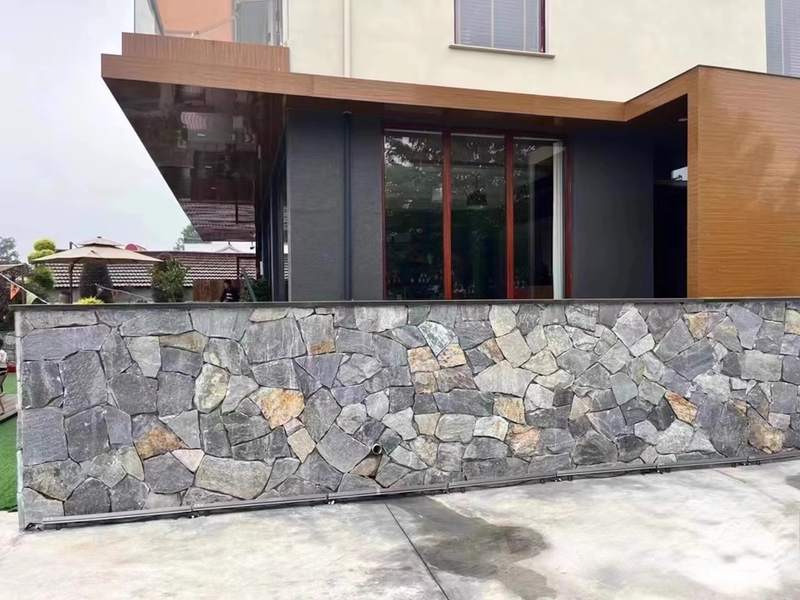
Przygotowanie miejsca: budowanie solidnego fundamentu
Proper site preparation is crucial for a stable and long-lasting Irregular Natural Random Loose Stone installation. A solid foundation prevents future shifting and ensures the longevity of your project. This chapter provides a detailed guide on preparing your site, including excavation, base layer installation, leveling, and drainage solutions. Getting this right is absolutely vital!
“A well-prepared site is the cornerstone of a successful irregular natural random loose stone installation, preventing future problems and ensuring a beautiful, durable result.”
Excavation: Removing Topsoil and Debris
The first step in site preparation is excavation. Remove all topsoil, grass, roots, and debris from the area. Excavate to a depth that allows for the base layer and the thickness of the stones, typically 6-8 inches. This ensures that the finished surface will be at the desired level. Use a shovel and wheelbarrow to remove the excavated material. This is a labor-intensive but necessary step.
Be sure to clear any underground utilities or obstacles before excavating. Contact your local utility companies to mark any buried lines. Consider the slope of the surrounding area to ensure proper drainage. Removing all organic matter prevents decomposition and settling, which can compromise the stability of your stone installation.
Base Layer: Laying and Compacting Gravel or Crushed Stone
After excavation, lay a base layer of gravel or crushed stone. This layer provides drainage and a stable foundation. Use a minimum of 4 inches of gravel or crushed stone, depending on the soil conditions and the intended use of the area. Spread the material evenly and compact it thoroughly using a plate compactor or hand tamper. Quality base materials from reliable suppliers, like Top Source Stone, are essential for stability.
Compacting the base layer is crucial to prevent settling. Overlap each pass with the compactor by at least 6 inches to ensure uniform compaction. Add water during compaction to help the material bind together. A properly compacted base layer will provide a solid foundation that will support the weight of the stones and prevent shifting.
Leveling: Achieving a Smooth and Even Surface
Achieving a smooth and even surface is essential for a professional-looking stone installation. Use a layer of sand or fine gravel to level the base layer. Spread the material evenly and use a level to check for any high or low spots. Add or remove material as needed to create a perfectly level surface. A smooth surface makes setting the stones much easier.
Use a long, straight board or a level to screed the surface. This will help you achieve a consistent and even plane. Check the level in multiple directions to ensure accuracy. A perfectly level surface will prevent uneven settling and ensure that the stones are stable and aligned. This requires patience, but it’s worth the effort!
Drainage: Ensuring Proper Water Runoff
Proper drainage is crucial to prevent water from damaging your stone installation. Ensure that the site has adequate drainage to handle rainwater and runoff. Consider installing drainage pipes or French drains to divert water away from the area. Slope the base layer slightly to promote water runoff. A well-drained site prevents water damage and prolongs the life of your installation.
Obserwuj, jak woda płynie podczas deszczu, aby zidentyfikować potencjalne obszary problemowe. Zainstaluj roztwory drenażowe w obszarach, w których woda ma tendencję do gromadzenia się. Upewnij się, że system drenażowy jest odpowiednio podłączony do odpowiedniego gniazdka. Ignorowanie drenażu może prowadzić do kosztownych napraw w dół drogi. Nie bądź mądry i funta głupi!
Koszty materiałów przygotowywania miejsca
| Tworzywo | Opis | Koszt jednostkowy | Szacowana ilość | Całkowity koszt |
|---|---|---|---|---|
| Żwir | 3/4″ zmiażdżone żwir dla warstwy podstawowej. | 35 USD/metr sześcienny | 5 jardów sześciennych | 175 USD |
| Zmiażdżony kamień | 1/2″ zmiażdżony kamień do wyrównywania. | 40 $/MARDE CRABIC | 2 jardy sześcienne | 80 USD |
| Piasek | Drobny piasek do wyrównywania powierzchni. | 25 USD/metr sześcienny | 1 stoczni sześcienne | 25 USD |
| Rura drenażowa | 4″ Perforowana rura drenażowa. | 5 USD za stopę | 50 stóp | 250 USD |
| Filtruj materiał | Tkanina geotełułowa do drenażu. | 1 $/stopę kwadratową | 100 stóp kwadratowych | 100 USD |

Instalacja krok po kroku: układanie nieregularnego kamienia dla naturalnego wyglądu
Installing Irregular Natural Random Loose Stone requires careful attention to detail to achieve a natural and professional look. This chapter offers a step-by-step guide covering mortar application, stone placement, and jointing techniques. With the right approach, you can create a stunning landscape feature. This is where the rubber meets the road!
“Proper installation techniques are key to showcasing the natural beauty of irregular natural random loose stone, ensuring a durable and visually appealing finish.”
Mixing Mortar: Achieving the Right Consistency
The first step is mixing the mortar to the right consistency. Follow the manufacturer’s instructions carefully. Add water gradually to the dry mortar mix, stirring continuously until you achieve a smooth, pliable consistency similar to peanut butter. Avoid adding too much water, as this can weaken the mortar. Use a mixing drill with a paddle attachment for best results. Getting the mix right is crucial.
Let the mortar slake for 10-15 minutes after mixing. This allows the chemicals to fully activate and improves workability. Remix the mortar briefly before using it. Discard any mortar that begins to harden or dry out. Proper mortar consistency ensures strong adhesion and prevents cracking.
Applying Mortar: Ensuring Full Contact with the Substrate
Apply a generous layer of mortar to the prepared substrate using a trowel. The mortar bed should be thick enough to accommodate the irregular shape of the stones, typically 1-2 inches. Ensure full contact between the mortar and the back of the stone. Press each stone firmly into the mortar, wiggling it slightly to ensure a good bond. Top Source Stone’s superior manufacturing ensures dimensional precision, making this step smoother.
Avoid getting mortar on the visible surfaces of the stones. If mortar gets on the surface, wipe it off immediately with a damp sponge. Work in small sections to prevent the mortar from drying out before you set the stones. A strong bond between the stone and the substrate is essential for a durable installation.
Stone Placement: Arranging Stones in a Visually Appealing Pattern
Arranging the stones in a visually appealing pattern is an art. Experiment with different layouts before setting the stones permanently. Aim for a natural, random look, but avoid creating large gaps or repeating patterns. Use stones of varying sizes and shapes to create visual interest. Step back frequently to assess the overall appearance. This takes a good eye!
Fit the stones together as closely as possible, leaving consistent gaps for jointing. Use a rubber mallet to gently tap the stones into place. Check the level of each stone and adjust as needed. Use shims to support stones that are not fully supported by the mortar. Proper stone placement is key to a beautiful and natural-looking installation. Remember, you are working with Irregular Natural Random Loose Stone.
Jointing: Filling Gaps and Enhancing Stability
Once the mortar has cured for 24-48 hours, it’s time to fill the joints. Use a pointing trowel to pack mortar into the gaps between the stones. Ensure that the joints are completely filled, leaving no voids. Smooth the mortar joints with a damp sponge to create a consistent and professional finish. Jointing enhances stability and prevents weed growth.
Avoid overfilling the joints, as this can detract from the natural appearance of the stones. Consider using a colored mortar to complement the stones. Clean any excess mortar from the stone surfaces immediately. Proper jointing is essential for a durable and aesthetically pleasing installation.
Step-by-Step Installation Time Estimates
| Step | Opis | Estimated Time | Tools Required |
|---|---|---|---|
| Mixing Mortar | Preparing mortar to the right consistency. | 30 minutes | Mixing drill, paddle attachment, bucket |
| Applying Mortar | Spreading mortar on the substrate. | 1 godzina | Trowel, bucket |
| Stone Placement | Arranging and setting stones in mortar. | 2-4 hours | Rubber mallet, level, shims |
| Jointing | Filling gaps between stones with mortar. | 1-2 godziny | Pointing trowel, damp sponge |

Finishing Touches and Maintenance: Ensuring Long-Lasting Beauty
Proper finishing and maintenance are essential for preserving the beauty and integrity of your Irregular Natural Random Loose Stone installation for years to come. This chapter provides essential tips on cleaning, sealing, and ongoing maintenance to keep your stone surface looking its best. A little care goes a long way!
Regular maintenance and proper sealing techniques will significantly extend the life and beauty of your natural stone installation.”
Cleaning: Removing Excess Mortar and Debris
After the mortar has fully cured, remove any excess mortar and debris from the stone surface. Use a stiff brush and a mild detergent to scrub the stones gently. Avoid using harsh chemicals or abrasive cleaners, as these can damage the stone. Rinse the surface thoroughly with clean water. A clean surface is the first step to long-lasting beauty.
For stubborn mortar stains, try using a specialized mortar remover. Follow the manufacturer’s instructions carefully. Test the remover on a small, inconspicuous area first to ensure it doesn’t damage the stone. Pressure washing can also be effective, but use a low-pressure setting to avoid damaging the surface.
Sealing: Protecting Stone from Stains and Weather
Sealing the stone surface protects it from stains and weather damage. Choose a high-quality Kamień naturalny sealer that is appropriate for the type of stone you have. Apply the sealer according to the manufacturer’s instructions. Typically, this involves applying a thin, even coat with a brush or roller. Top Source Stone offers advice on selecting the right sealing products.
Allow the sealer to dry completely before exposing the surface to water or traffic. Reapply the sealer every 1-3 years, depending on the level of exposure. Sealing is a crucial step in preserving the beauty and longevity of your stone installation. This will really make a difference.
Ongoing Maintenance: Regular Cleaning and Inspection
Regular cleaning and inspection are essential for ongoing maintenance. Sweep or vacuum the stone surface regularly to remove dirt and debris. Clean spills immediately to prevent staining. Inspect the surface periodically for cracks or damage. Addressing small issues promptly can prevent them from becoming larger problems.
Avoid using de-icing salts on stone surfaces, as these can damage the stone. Instead, use sand or gravel for traction. Trim any vegetation that is growing near the stone surface to prevent staining and moisture retention. Simple maintenance goes a long way.
Repairing Cracks and Damage: Addressing Common Issues
Cracks and damage can occur over time due to weathering or heavy traffic. Repair small cracks with a stone repair compound that matches the color of the stone. Follow the manufacturer’s instructions carefully. For larger cracks or damaged stones, consider replacing the affected area. Top Source Stone’s durable, high-quality stone requires minimal maintenance.
Remove any loose debris from the damaged area before applying the repair compound. Allow the repair compound to cure completely before exposing the surface to traffic. Consider hiring a professional for more extensive repairs. Addressing issues promptly preserves your project.
Maintenance Schedule for Irregular Stone
| Task | Częstotliwość | Materials Needed | Estimated Time |
|---|---|---|---|
| Sweeping/Vacuuming | Weekly | Broom or vacuum | 15 minutes |
| Cleaning | Monthly | Mild detergent, stiff brush, water | 30 minutes |
| Sealing | Every 1-3 years | Stone sealer, brush or roller | 1-2 godziny |
| Inspection | Quarterly | None | 10 minutes |
| Crack Repair | As needed | Stone repair compound, trowel | Varies |
Wniosek
After 15 years in the stone industry, I’ve learned that installing irregular natural random loose stone isn’t just about laying rocks; it’s about creating a timeless landscape. It’s about bringing a piece of nature’s art into your backyard with confidence.
From my experience at Top Source Stone, the key to success lies in the details: proper planning, quality materials, and a bit of patience. Trust me; getting the foundation right is “where it’s at,” and ensures your project stands the test of time.
Remember, every stone tells a story, and with the right approach, you can create something truly unique. If you’re aiming for lasting beauty and a touch of nature, taking the time to do it right is always worth it.
Często zadawane pytania
Q1: What are the benefits of using irregular natural random loose stone for landscaping?
A1: Irregular natural random loose stones are excellent for landscaping due to their unique shapes that offer aesthetic appeal and visual interest. They are also durable, environmentally friendly, and add a natural look to your landscaping projects.
Q2: How do you install irregular natural random loose stone?
A2: To install irregular natural random loose stone, first prepare a stable and leveled base using compacted gravel. Arrange the stones in your desired pattern, fitting them snugly. Fill gaps with smaller stones or gravel, and ensure the surface is even.
Q3: What tools are needed for laying loose stone?
A3: You will need basic landscaping tools such as shovels, rakes, and a compactor. Additionally, a rubber mallet can help adjust the stones, and a level ensures they are laid evenly.
Q4: How do you maintain loose stone paths or patios?
A4: Regular maintenance involves removing debris, adjusting stones that may have shifted, and occasionally adding fresh gravel to fill in gaps. Regular compaction may also be necessary to maintain their sturdiness.
Q5: Is irregular natural random loose stone suitable for high-traffic areas?
A5: Yes, with proper installation, irregular natural random loose stones can handle high traffic areas. Ensure they are well-compacted, and any gaps are filled with gravel for stability.
Q6: What are the environmental benefits of using natural stone?
A6: Natural stones are environmentally beneficial as they require minimal processing and can be locally sourced, which reduces the carbon footprint. They also don’t emit VOCs, making them an eco-friendly choice for construction.
Q7: Can irregular natural random loose stone be used indoors?
A7: Yes, these stones can be used indoors, often as wall cladding or flooring in areas like kitchens and bathrooms, providing a rustic, natural aesthetic.
Q8: How do you choose the right stone for your project?
A8: Consider factors like the intended use, desired aesthetic, local availability, and the stone’s natural durability and weather resistance. Consulting with a stone supplier can also provide insights into the best options for your needs.
Linki zewnętrzne
- Random Loose Stone: The Natural Choice for Sustainable Design
- Naturalny, nieregularny, losowy, luźny fornir kamienny
- Wszystko o kostkach brukowych z naturalnego kamienia – Najlepsza tablica źródłowa
- Garden Stepping Stones | Landscape & Outdoor Stepping Stones
- Autumn Brown Irregular Stepping Stones – SUI Stone
- Irregular Stone Flagging – Stonewood Products
- Natural Stone Crazy Paving Ideas for Your Outdoor Space
- Flagstone for Sale in Ohio — Stone Center


